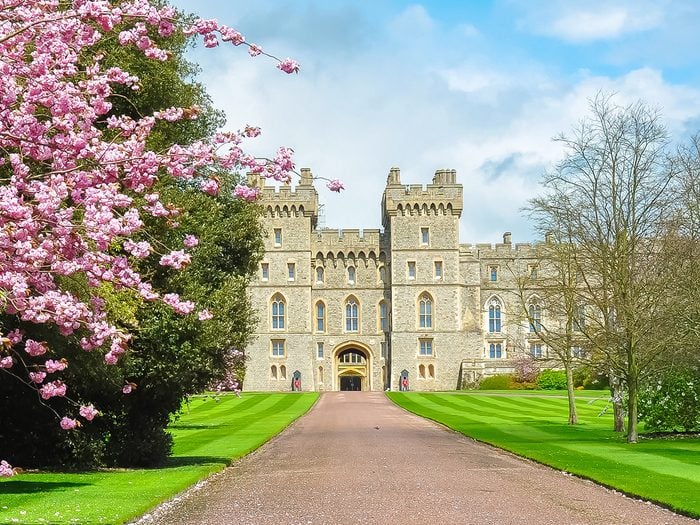
The Royal Residences of the United Kingdom
The coronation of King Charles III has placed the royal residences of the United Kingdom in the spotlight. When a new monarch is crowned, there are usually changes to where members of the Royal Family live and work as everyone moves up in the line of succession and public engagements and patronages are redistributed among the family’s working members.
While King Henry VIII personally owned 60 residences after seizing church property following the dissolution of the monasteries in the 16th century, the modern Royal Family uses less than 20 homes on a regular basis. Some of these residences are the private property of the monarch, while others are held in trust for the Nation to support the official duties of the sovereign, or administered independently as part of the Crown Estate.
Here are the key royal residences in England, Scotland, Wales and Northern Ireland. All 18 currently serve as homes and offices for various members of the Royal Family—some of whom may soon find themselves in need of alternate accommodation.
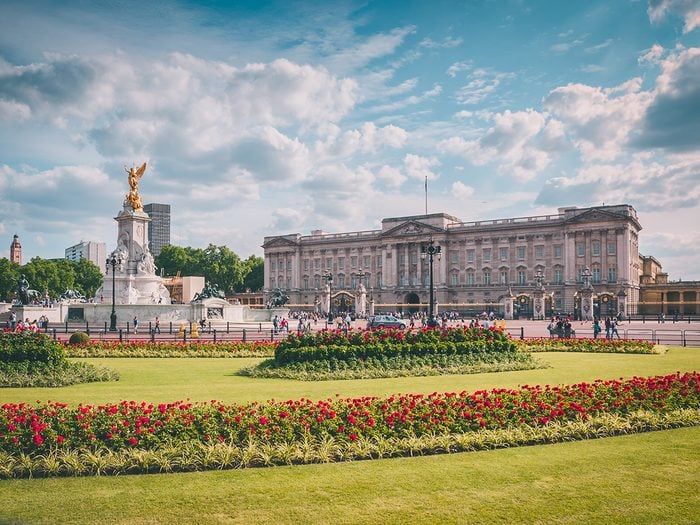
Buckingham Palace
Buckingham Palace in London, famous for the regular Changing of the Guard, is synonymous with the British monarchy in the popular imagination. Queen Victoria was the first monarch to make the palace, which is held in trust by the Nation, her principal royal residence when she succeeded to the throne in 1837.
For more recent royal residents, Buckingham Palace had a museum-like quality. Having enjoyed smaller and more informal royal residences, both Queen Elizabeth II and her father King George VI were reluctant to move into this official residence that is also the setting for state dinners, receptions, and garden parties.
Since the 1990s, the state rooms have been open for public tours in August and September, and the Queen’s Gallery has displayed exhibitions of art from the Royal Collection for more than 60 years.
Buckingham Palace is currently undergoing renovations that will last until at least 2027, so while King Charles III works at the palace, holding weekly meetings with the British Prime Minister and receiving ambassadors, he continues to live with his consort, Queen Camilla, at nearby Clarence House.
Discover 50 more London attractions worth adding to your bucket list.
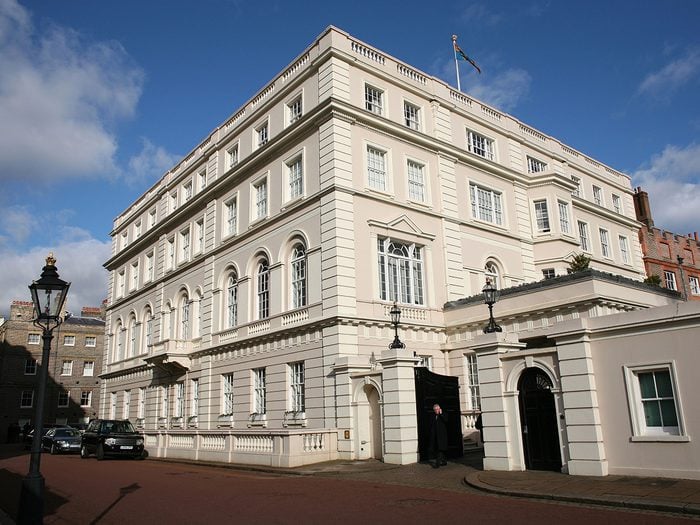
Clarence House
King Charles III moved into Clarence House, part of the Crown Estate, after the death of his grandmother Queen Elizabeth the Queen Mother in 2002. The house was designed by John Nash and built between 1825 and 1827 for Prince William, Duke of Clarence, who succeeded to the throne as King William IV. Charles lived there as a small child with his parents, Princess Elizabeth and Prince Philip, and younger sister, Princess Anne, before his mother succeeded to the throne as Queen Elizabeth II and the family moved into Buckingham Palace.
King Charles III and Queen Camilla continued to live at Clarence House after Charles was proclaimed king by the Accession Council at nearby St. James’s Palace. It’s open to the public during the summer with guided tours provided of the rooms on the ground floor.
Take a look back at the most memorable coronations in British history.
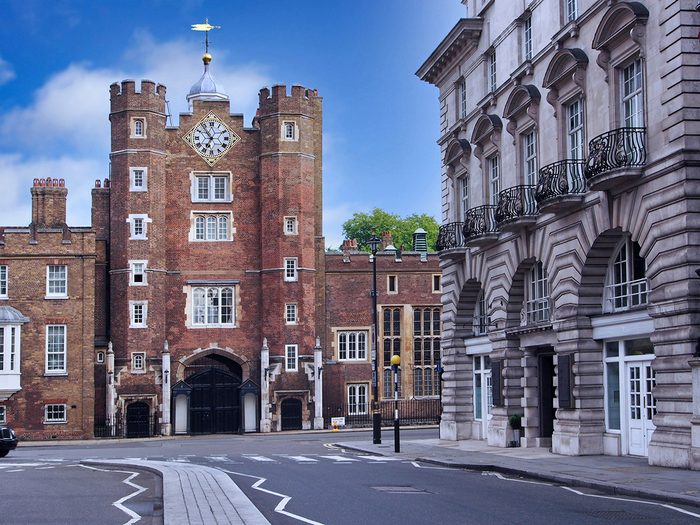
St. James’s Palace
Although Buckingham Palace is the working home of the monarchy and Clarence House is the personal residence of King Charles III and Queen Camilla in London, St. James’s Palace remains the senior royal residence and the setting for important ceremonies such as Accession Day.
When ambassadors present their credentials in the United Kingdom, they present them to “the court of St. James’s.” The palace contains the office of His Majesty’s Marshal of the Diplomatic Corps, Charles’s liaison with the diplomatic community in London.
St. James’s Palace was the principal residence in London for the Georgian monarchs in the 18th century, but Queen Victoria, when she succeeded to the throne in 1837, decided to move into Buckingham Palace instead, and spend extended periods of time at Windsor Castle.
Today, it’s the London residence of Charles’s sister Princess Anne (the Princess Royal), the late Queen Elizabeth II’s cousin Princess Alexandra, and King Charles III’s niece, Princess Beatrice and her family. There has been speculation in the British press that Princess Beatrice may move out soon as she is not a working member of the Royal Family.
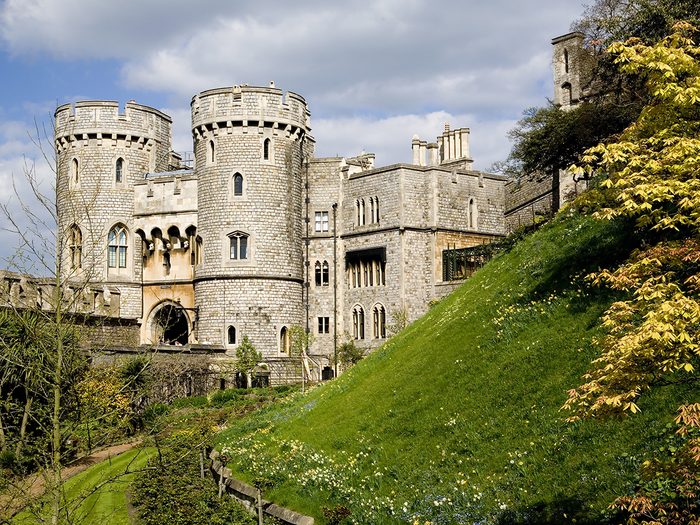
Windsor Castle
Windsor Castle, held in Trust for the Nation, has been a royal residence since the Norman Conquest of 1066 and the setting for key moments in royal history.
The modern House of Windsor is named for the castle. During the lifetime of Queen Elizabeth II, the castle became associated with the monarchy’s survival during times of crisis. The future queen lived there during the Second World War and isolated there with Prince Philip during the COVID-19 pandemic near the end of her reign. The annus horribilus of 1992 when the marriages of three of the Queen’s four children came to an end, was the also the year of a catastrophic fire at Windsor Castle. The restored state rooms and nearby St. George’s Chapel are open to the public.
King Charles III and Queen Camilla spend less time there than Queen Elizabeth II and Prince Philip did, but the castle remains a setting for special events such as the 2022 pre-Christmas lunch hosted by the King for his extended family.
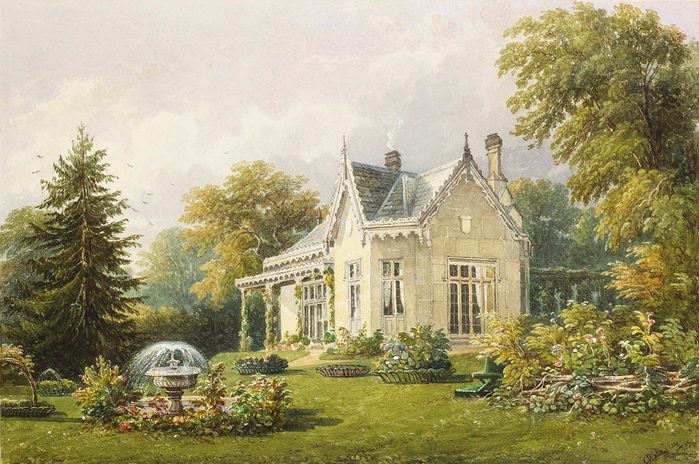
Adelaide Cottage
In 2022, William and Catherine, now Prince and Princess of Wales, moved to Adelaide Cottage on the Windsor estate with their three children, Prince George, Princess Charlotte and Prince Louis. The cottage is named for King William IV’s consort Queen Adelaide and was once the home of Peter Townsend, the divorced equerry who Queen Elizabeth II’s sister Princess Margaret decided not to marry in 1955. There have been numerous reports in the British press that William and Catherine are finding Adelaide Cottage too small for their needs as their three children grow older and that they are interested in moving into nearby Royal Lodge.
Get to know Queen Elizabeth’s great-grandchildren.
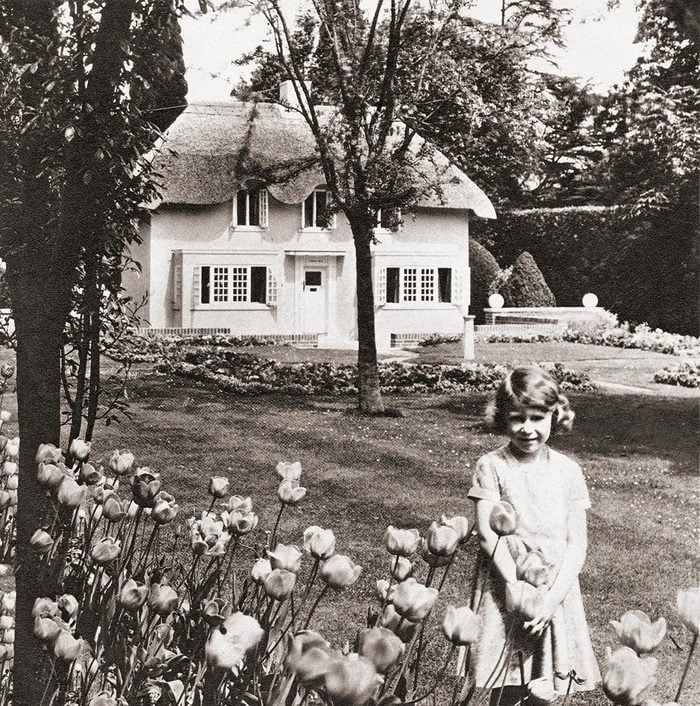
Royal Lodge
A 30-room mansion in the Windsor Great Park that belongs to the Crown Estate, Royal Lodge was one of Queen Elizabeth the Queen Mother’s residences from 1952 to 2002. After her death, Royal Lodge became the residence of Queen Elizabeth II’s second son Prince Andrew, Duke of York, his former wife Sarah Ferguson, Duchess of York and their daughters Princess Beatrice and Princess Eugenie. Prince Andrew leased the 30-room mansion in 2003 for a one-time payment of £1 million.
The Royal Lodge grounds include an important piece of royal history: the miniature cottage Y Bwthyn Bach given to Princess Elizabeth (above) by the people of Wales, which is now enjoyed by some of her great-grandchildren.
Prince Andrew may soon be moving out of Royal Lodge. There are reports that his £249,000 allowance may be cut by King Charles III as Andrew is in disgrace and no longer a working member of the Royal Family. Without this allowance, Andrew will be unable to maintain Royal Lodge and may have to consider moving into a smaller residence on the Windsor Castle grounds: Frogmore Cottage.
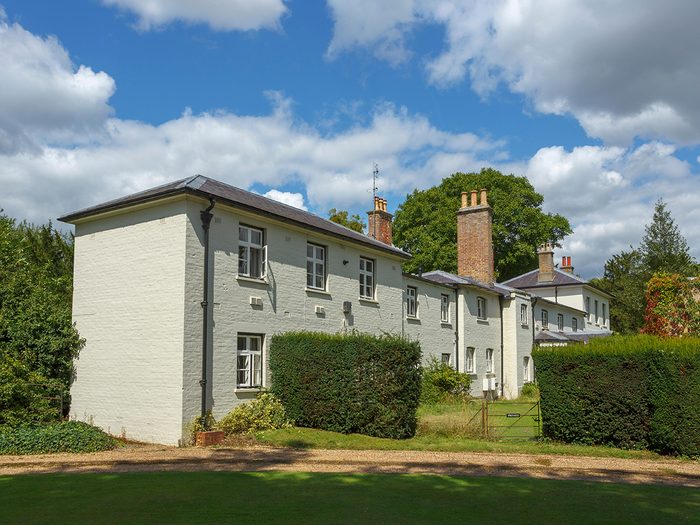
Frogmore Cottage
As a grace and favour estate, Windsor’s Frogmore Cottage is leased by the sovereign to family members or former employees at the monarch’s discretion.
The cottage was originally a country retreat for King George III’s consort Queen Charlotte, and was known at that time as Double Garden Cottage. The name changed during the reign of Queen Victoria when the monarch noted the “immense number of little frogs” on the grounds, which she considered “quite disgusting.” Twentieth century tenants included Grand Duchess Xenia Alexandrovna, the youngest sister of Czar Nicholas II of Russia, who lived there in the 1920s after escaping the Russian Revolution.
In 2019, Prince Harry and Meghan, Duke and Duchess of Sussex moved into Frogmore Cottage and their extensive renovations to the property attracted criticism from the British press. According to Prince Harry’s memoir, Spare, Harry and Meghan intended for Frogmore Cottage to be their “forever home.” They kept the tenancy after stepping back from royal duties and moving to North America, allowing Harry to remain domiciled in the United Kingdom. In March 2023, Harry and Meghan were requested to vacate the property. There was press speculation that this decision was prompted by the revelations in Harry’s memoirs, but it may simply have been part of a wider reorganization of royal residences in the new reign of King Charles III.
Check out the most scandalous royal memoirs ever published.
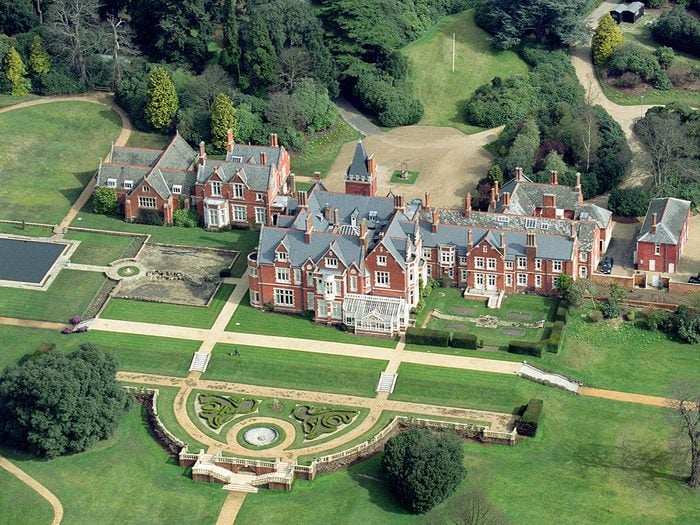
Bagshot Park
Bagshot Park in Surrey, 18 kilometres south of Windsor Castle, was originally the home of Queen Victoria’s third son Prince Arthur, Duke of Connaught, Governor General of Canada from 1911 to 1916. The Duke of Connaught was well-travelled and commissioned author Rudyard Kipling’s father John Lockwood Kipling to design a spectacular billiard room that was prefabricated in India then installed at Bagshot Park by Indian craftspeople.
Today, Bagshot Park is the home of King Charles III’s youngest brother, Prince Edward, Duke of Edinburgh, his wife Sophie, Duchess of Edinburgh and their children Lady Louise and James, Earl of Wessex. Edward’s 50-year lease on the property from the Crown Estate dates from 1998, the year before his wedding to Sophie Rhys-Jones.
Discover 10 Canadian hotels that have hosted royal guests.
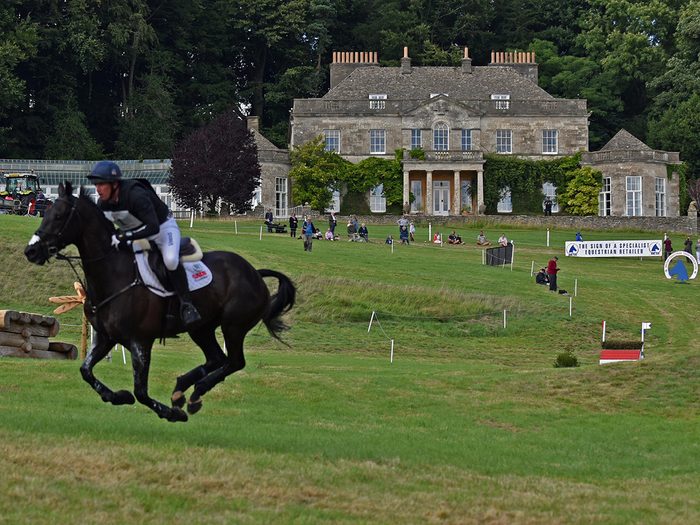
Gatcombe Park
In 1976, Queen Elizabeth II purchased Gatcombe Park, an 18th century country house, for her daughter Princess Anne (the Princess Royal) and Anne’s first husband Mark Phillips. The 730-acre Gloucestershire estate was divided when Anne and Mark Phillips divorced in 1992. Anne currently lives at Gatcombe with her second husband Vice Admiral Timothy Laurence, and her two children, Peter Phillips and Zara Tindall have homes on the estate. Today, Gatcombe Park is best known for the annual Gatcombe horse trials, attended by Anne and her children and grandchildren.
Here are 10 history podcasts worth adding to your playlist.
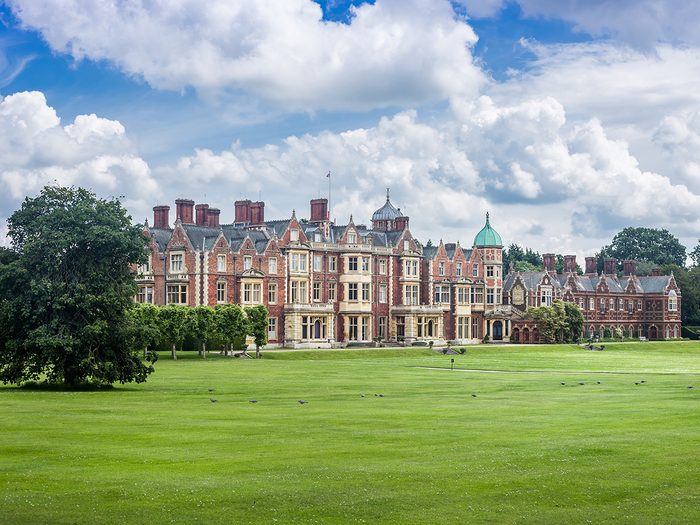
Sandringham
Sandringham in Norfolk is a private royal estate purchased by Queen Victoria for her son, the future King Edward VII, in 1862. After his marriage to Princess Alexandra of Denmark in 1863, Edward commissioned an expanded Jacobean-style country house at Sandringham which his friend Charles Carington described as “the most comfortable in England.” After Edward’s death in 1910, his widow Queen Alexandra continued to live in the 365-room Sandringham House while her son King George V, daughter-in-law Queen Mary and their six children lived in the much smaller York Cottage on the Sandringham grounds.
Queen Elizabeth II traditionally spent Christmas at Sandringham, remaining there until February 6, the anniversary of the death of her father, George VI. Charles III has continued the tradition of royal Christmases at Sandringham.
Check out current estimates of how much the Crown Jewels are worth.
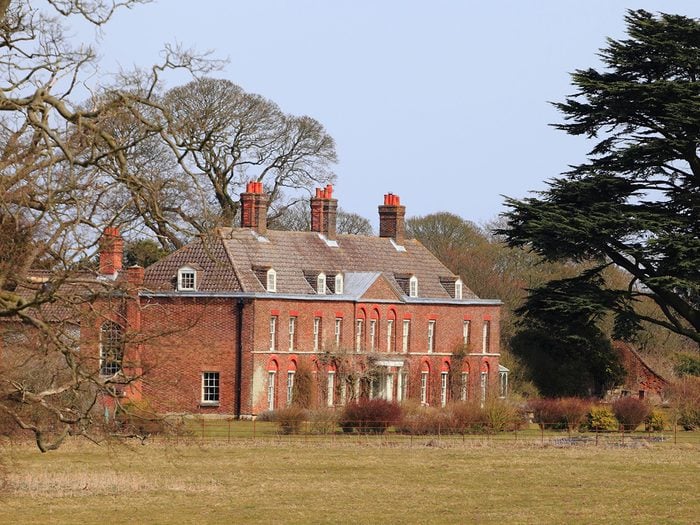
Anmer Hall
Anmer Hall, a 10-bedroom stately home on the Sandringham Estate, is the country residence of William and Catherine, now the Prince and Princess of Wales, and their children Prince George, Princess Charlotte and Prince Louis.
Queen Elizabeth II gave the house to William and Catherine in 2013 and they moved there in 2015 after two years of renovations. William, Catherine and their children isolated at Anmer during the COVID-19 pandemic and continue to spend time at the house for weekends and holidays. Prince Harry and his then-fiancée Meghan Markle stayed at Anmer Hall with William and Catherine for their first Christmas together with the Royal Family in 2017. At the time, Harry spoke warmly of how his family had welcomed Meghan over Christmas but there were later reports of tensions between the two royal couples.
Explore the fascinating history of Highclere, the real-life Downton Abbey castle.
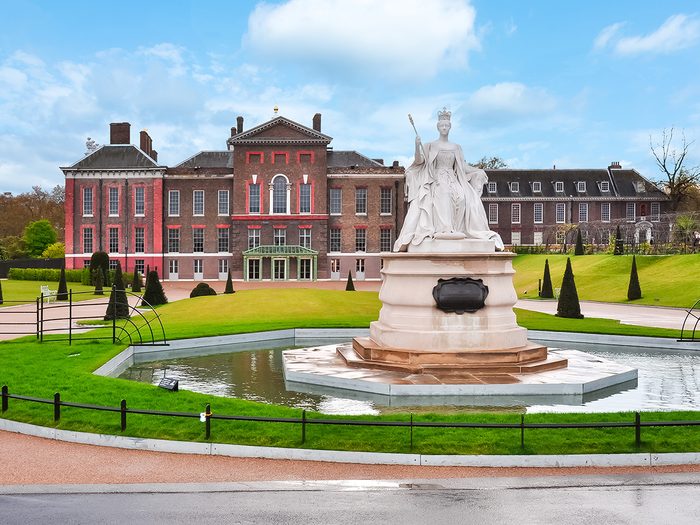
Kensington Palace
London’s Kensington Palace was purchased by King William III and Queen Mary II in 1689 and their state rooms are open to the public as part of a museum managed by Historic Royal Palaces.
The part of Kensington Palace that remains a working royal residence has long been a home for the extended Royal Family. The future King Edward VIII nicknamed the palace, “The Aunt Heap” because it was the home of daughters and granddaughters of Queen Victoria in their old age. The palace remains the London residence of the late Queen Elizabeth II’s cousins and their spouses, Prince and Princess Michael of Kent, the Duke and Duchess of Kent and the Duke and Duchess of Gloucester.
Prince William and Catherine, now the Prince and Princess of Wales lived at Nottingham Cottage on the Kensington Palace grounds when they were in London during the first two years of their marriage. In 2013, they moved into the Kensington Palace apartment that was once the home of Princess Margaret, which remains their official London residence. The extensive renovations to this 20-room suite attracted negative press scrutiny including headlines about “two kitchen Kate.”
Prince Harry and Meghan, Duke and Duchess of Sussex lived at Nottingham Cottage after their wedding in 2018. In their 2022 Netflix documentary, Harry and Meghan, Harry complained about the low ceilings and cramped conditions at the cottage, remarks that may have worsened his already strained relationship with his brother and father.
Here’s what Kensington Palace looked like after Princess Diana’s death.
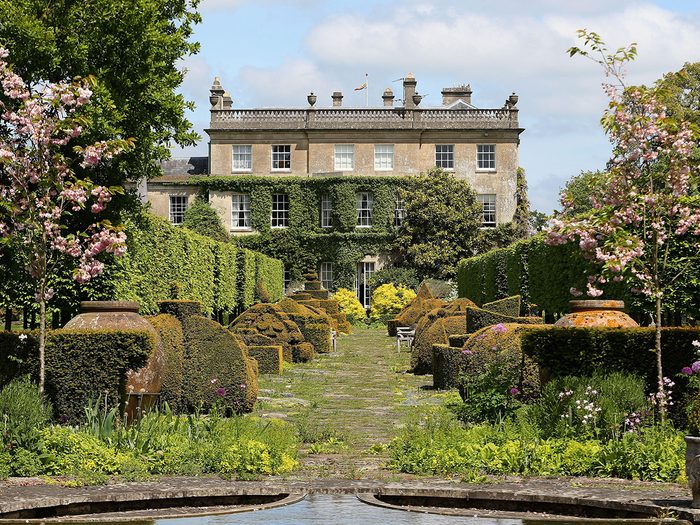
Highgrove House
As Prince of Wales and Duke of Cornwall, the future King Charles III purchased Highgrove House near the Cotswolds village of Tetbury in Gloucestershire with revenues from the Duchy of Cornwall in 1980. The house became the country home of Charles, his first wife Lady Diana Spencer and their sons Prince William and Prince Harry.
When Charles purchased the property, the gardens were neglected and overgrown. Charles transformed the grounds into an organic, sustainable garden with wildflower meadows and a natural reed bed sewage system as well as a Duchy home farm that produces ingredients for the Duchy Originals foods that raise funds for The Prince’s Trust charities.
William inherited the Duchy of Cornwall and its properties, including Highgrove House, upon Charles’s accession to the throne in 2022, but Charles continues to lease the property from the Duchy as a private country home.
The gardens at Highgrove have been open to the public between April and October since 1996.
Discover the secrets of the Royal Yacht Britannia.
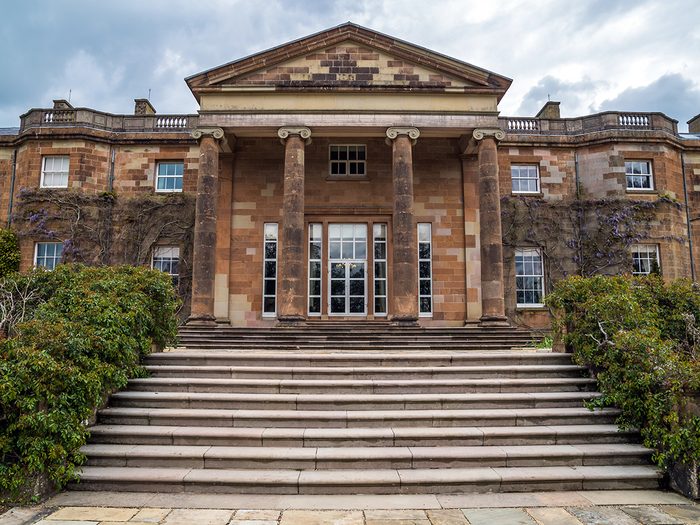
Hillsborough Castle
Hillsborough Castle is the official residence of the Secretary of State for Northern Ireland and the official residence of King Charles III and other members of the Royal Family during their visits to Northern Island. Charles and Camilla spent time at Hillsborough Castle just days after the death of Queen Elizabeth II when they travelled to Northern Ireland to receive condolences and meet with local political figures. The visit attracted press attention because of the new monarch’s frustration with a leaky fountain pen while signing the guest book.
Here are the 10 most memorable royal visits to Canada.
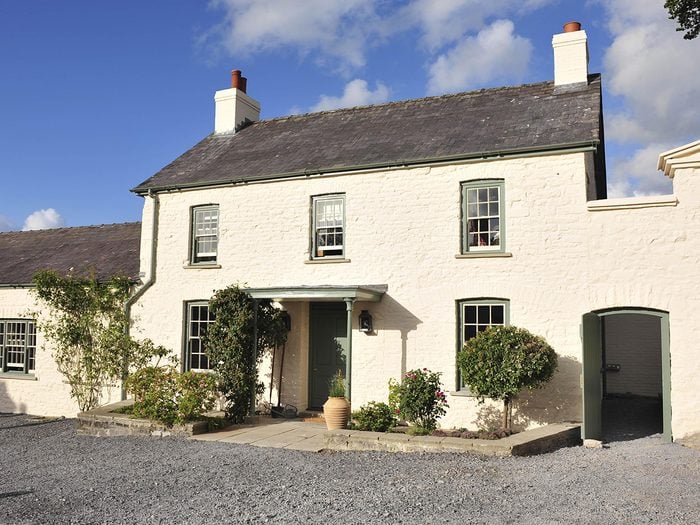
Llwynywermod
When the future King Charles III was invested as Prince of Wales in 1969, there were protests from Welsh nationalists who argued that Charles had little connection to Wales beyond the few months he spent learning Welsh at the University of Aberystwyth before the ceremony. A few past Princes of Wales, including King Henry VIII’s elder brother Arthur, spent time living at Ludlow Castle in Shropshire near the Welsh border, but modern Princes rarely spent time in Wales. That changed when Charles purchased the 192-acre Llwynywermod, near the village of Myddfai, with revenues from the Duchy of Cornwall. The house served as Charles’s Welsh residence and a place to showcase Welsh craftsmanship and culture. Llwynywermod now belongs to William and Catherine, the new Prince and Princess of Wales.
Test your knowledge with these history questions people always get wrong.
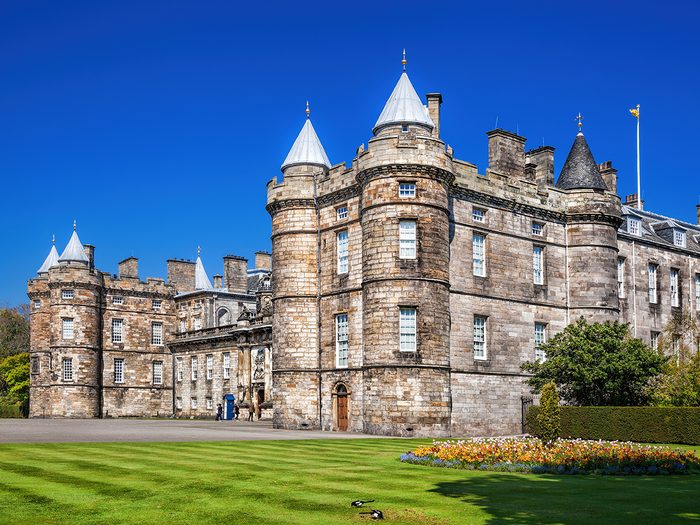
Palace of Holyroodhouse
The Palace of Holyroodhouse in Edinburgh is the monarch’s official residence in Scotland, and the setting for Scottish investitures, receptions and garden parties. Queen Elizabeth II resided there every summer for “Scotland week,” undertaking official engagements before her annual holiday at Balmoral Castle. The Palace of Holyroodhouse is open to the public throughout the year, showcasing Scottish royal history—famous past residents include Mary, Queen of Scots and Bonnie Prince Charlie—and exhibitions from the Royal Collection.
Did you know April 6 is officially Tartan Day in Canada, a celebration of Scottish culture and heritage?
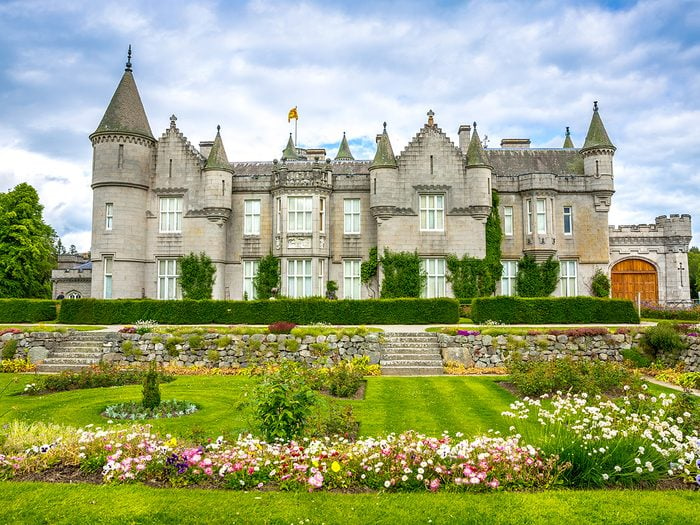
Balmoral
On Sept. 8, 2022, Queen Elizabeth II died at Balmoral Castle in Aberdeenshire, Scotland, and King Charles III succeeded to the throne. The Castle had been one of Elizabeth II’s favourite residences and the setting for her annual summer holiday in the Scottish Highlands.
Balmoral was purchased and rebuilt by Queen Victoria and Prince Albert as a private royal residence in 1852. Victoria enjoyed Sir Walter Scott novels and was fascinated by Scottish culture. The purchase of Balmoral Castle established a close personal relationship between the monarchy and Scotland after centuries had passed with few Scottish royal visits. Charles and his first wife Diana spent part of their honeymoon there. Elizabeth II was at Balmoral with her family when they received the news of Diana’s death in 1997, events dramatized in the 2006 film, The Queen, starring Helen Mirren.
There have been reports that Charles III will not spend his summers at Balmoral, but instead continue to spend time at nearby Birkhall.
Balmoral Castle is open to the public from April to July every year.
Take a look back at the Queen’s incredible life in photos.
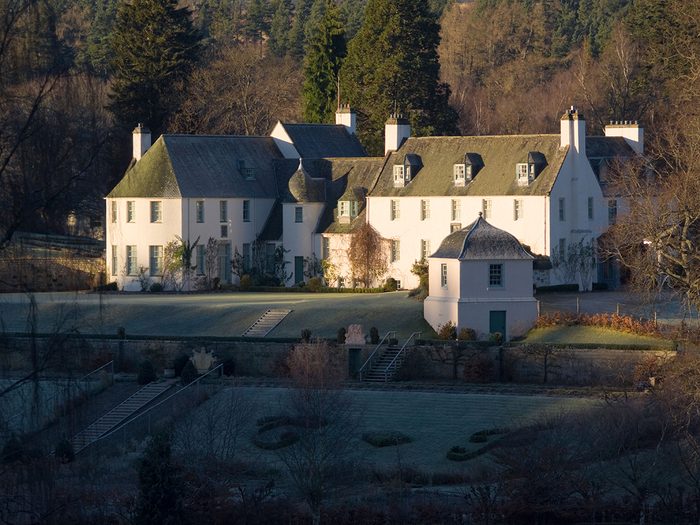
Birkhall
Queen Victoria and Prince Albert added Birkhall to the Balmoral Estate as a Scottish home for their son, the future King Edward VII. Edward considered the house too small for shooting parties, but it became a beloved holiday home for subsequent generations of the Royal Family, especially Queen Elizabeth the Queen Mother. The future Queen Elizabeth II and Prince Philip spent part of their honeymoon there in 1947 and the future King Charles III honeymooned there with his second wife, the future Queen Camilla, in 2005. Charles isolated at Birkhall when he contracted COVID-19 for the first time in 2020. Charles has spoken warmly of the Birkall gardens, “It is such a special place, particularly because it was made by my grandmother [the Queen Mother].” As King and Queen, Charles and Camilla spend most of their lives in the public eye, and private holidays at Birkhall provide a welcome respite from their busy schedule of royal duties and overseas tours.
Now that you’re familiar with these royal residences, check out King Charles’s most memorable visits to Canada.